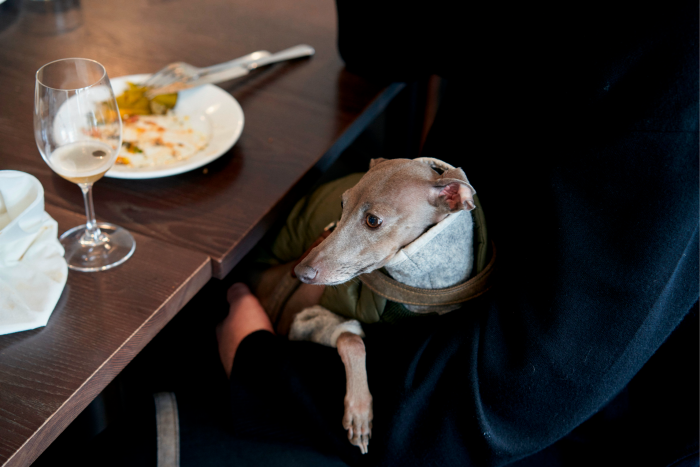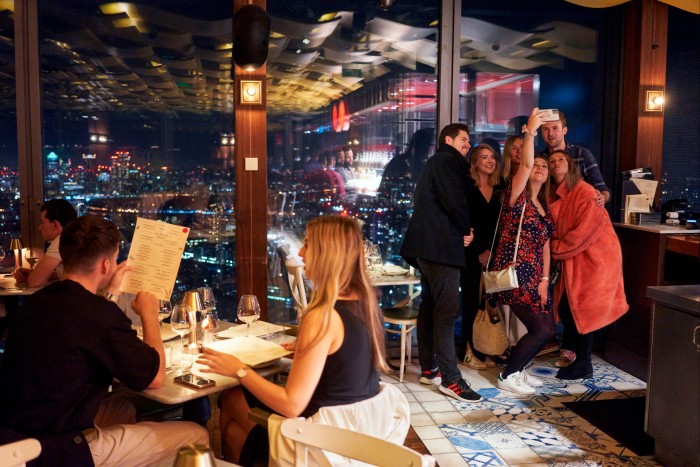Dine out at 6pm? I’d rather not, thank you
I’m going to let you in on one of the secrets of restaurant reviewing. If the place you want to visit is ridiculously popular, and declared smoking hot by every other critic, you can still get a table by ringing up and asking for a six o’clock booking. That’s how it’s done.
At least . . . that’s how it used to be done. Because since we returned from the last lockdowns, the early slots have been filling up. Now, at six, you find it’s not just another solitary critic on the other side of the room, silently scratching a critique into their Moleskine, but couples having a drink or a meal without a by-your-leave. And worse, the Twitterati are asking: “Is six the new eight?”
It seems to have started, as so many things do, in New York, a city where the only thing more endlessly fascinating than oneself is where and how one eats. Here the fashionable are said increasingly to be going to dinner straight from the office and . . . well, pearls are being clutched. It’s hard to imagine this trend will take off in the great European capitals, where we have all enjoyed long and glorious meals, late into the night — thank goodness — but what of London?
For as long as I can recall, Londoners have tended towards later dining. People in the restaurant world set their collective watches by it. Though your shift may well have started at five, you could rely on an hour or so of extra prep time in the kitchen or glass-polishing out front. You have probably experienced it yourself. If you’ve ever walked into a restaurant for an early meal and the waiters had that weird eyeball thing where they scan the room like raptors but somehow avoid you, your waving hand and a 30cm safety zone around you, just to be sure. Well, that was me once. Sorry. Anyone coming in before 7.30 was a tight-fisted, pre-theatre timewaster, or just a noob who didn’t know the drill. Early diners messed with your easy slide into the shift.

At the other end of the shift, when you were desperate to square away your station and get out, there would either be a table of high rollers, congenitally incapable of leaving the liqueur trolley alone, or desperate last-minuters who might delay your arrival at an after-hours bar but who would eat anything you had left, quickly, and feel guilty enough to tip like an oligarch. Late diners were ever there, foiling your early escape.
I ask Hugh Smithson-Wright, one of the most respected flâneurs on the London restaurant scene, if he can confirm the phenomenon. “Of course, there has always been pre-theatre dining — typically a rather sad affair of meagre set menus, served in tearing haste,” he says. But he has “definitely noticed an emerging amenability to meeting and eating earlier”.
“Pre-theatre” business has always marked the out-of-towner — enjoying a light “prix fixe” before an evening at The Mousetrap and the last train home to the suburbs — for which tribe Manhattanites coined the term “bridge and tunnel”. There are strong indications that the early slots might be filling today because of the very mechanics of metropolitan living. “It’s getting harder to live close to the centre of town if you’re not old and rich,” says one of the rare indiscreet maître d’s. “People can’t afford to go home, get dressed up and come back out, so we’re a convenient stop after work.”


It seems there may be a technical issue, too. With most restaurant bookings now done online, Smithson-Wright suspects “some diners might unwittingly be led into eating earlier by online booking portals from which inexplicably the “usual” dining hours of 7pm to 8.30pm-ish have been blocked out . . . Users don’t think to phone and take what’s on offer.”
What keeps me awake in the early hours is the fear that the restaurant world I love is changing because younger diners have such a different attitude towards drinking. I’m sure there are people who can have a couple of kombuchas, a low-alcohol craft beer or two and a home-fermented shrub to round things off before heading home for an early night, but I need to start at three seconds past six with a cleansing martini and I really can’t get through sufficient wines and after-dinner drinks to make it worth going out unless we can continue past midnight. Getting swept out at closing time used to be what defined a grown-up. Now, apparently, it’s your ticket to rehab.


Sam Hart, whose restaurant group includes Quo Vadis, Barrafina, Parrillan and El Pastor, has seen an early dining trend coming over the last decade. “It might be something to do with us adopting more American working hours, getting into work earlier compared to what used to be the usual 10am start, and consequently making it less palatable to be dining late into the night.”
For Gemma Bell, doyenne of the industry and woman-about-town, the situation varies by postcode. She believes the phenomenon is a legacy of the pandemic and working from home, which mostly affects central London restaurants. Knightsbridge/Mayfair, she adds however, are “immune because of the ‘international set’, who generally dine much later”.
It doesn’t seem outlandish that the work-from-home phenomenon that has so affected life in the City might also have affected the West End. But Hart highlights something more worrying: “We used to have a great trade in ‘post-theatre’ dining, but that magic third service has become more elusive, whereas the early first sitting is rocking.”
Do you feel your eating habits have shifted?
If so, in what way? Share your experiences and thoughts in the comments below, making sure to let us know where in the world you are writing about
This, then, might be the dark reality behind a frothy trend. The hospitality industry, despite keeping a cheerful smile going for every customer, is facing staff shortages and rising prices for food and power, and is functioning in a world where guests have less to celebrate and less money to spend. An industry that was unsustainable before the pandemic now looks in even worse shape. While it’s exciting that dining rooms might be getting busier earlier, pray God they’re not getting quieter later.
The latest Hospitality Market Monitor (from CGA and AlixPartners) shows the loss of 2,230 licensed hospitality premises since June, which represents an average of just over 24 closures a day. We are already in a situation where remaining venues are closing for lunch. It’s hard to find anywhere open at all on a Monday or Tuesday evening, and a full dining room is a rarity at any time. Restaurants are not in a position to take an additional, culture-driven net reduction in “bums on seats”.
If customers are filling early tables that would otherwise stand empty, that’s terrific news, but if they are looking to eat cheaper or quicker, or drink less booze, or they are an ageing demographic, pushing off back home to watch the telly with a bottle of their own wine, then they are canaries in the coal mine for the restaurant world and we are looking at grim times ahead, no matter what time we sit down to eat.
Follow Tim on Twitter @TimHayward and email him at [email protected]
All photographs for the FT by Harry Mitchell
Follow @FTMag on Twitter to find out about our latest stories first
For all the latest Business News Click Here
For the latest news and updates, follow us on Google News.
